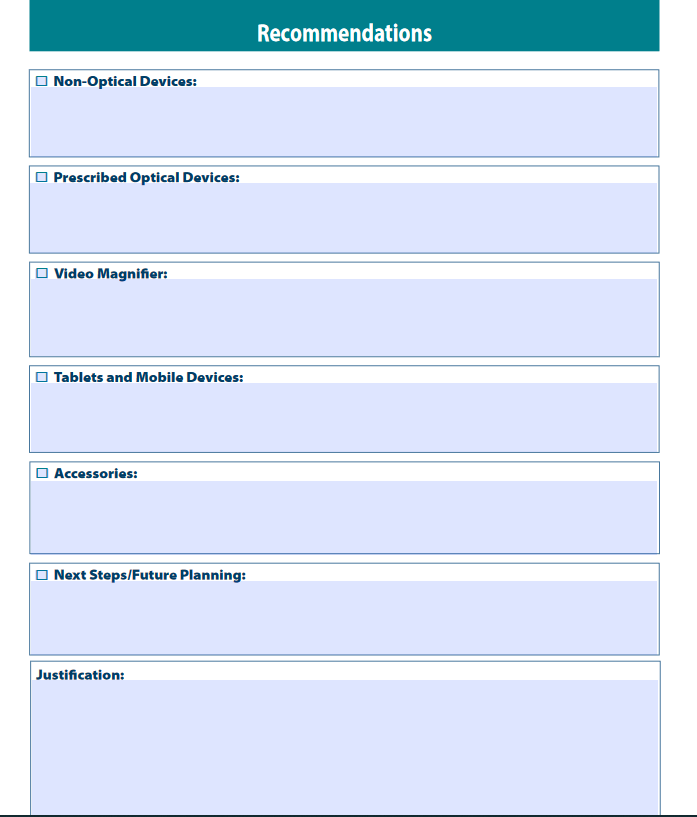
Matching Assistive Technology Features to Low Vision Needs
PaTTAN created a publication called Matching AT Features to Low Vision Needs. This will assist evaluators in collecting data and recommendations to maximize the use of individual student's functional vision.
For students who have low vision, various interventions have the potential to maximize the use of functional vision which varies from student to student. PaTTAN (PA Training and Technical Assistive Network) created a publication called Matching AT Features to Low Vision Needs.
These specific strategies can maximize clarity, optimize the field of view, maximize color and contrast, optimize lighting, minimize glare, and enhance visual efficiency, visual comfort, and visual confidence.
Consider the following general process to match students with appropriate low vision interventions within a functional setting:
-
Conduct a Functional Vision Assessment (FVA) with the student who has low vision to identify areas of visual need for task performance
-
Identify features of low vision interventions that may help to meet these needs
-
Have the student trial low vision interventions
-
Gather data on student task performance with the low vision interventions
- Compare the task performance before and after intervention prior to making intervention recommendations and/or referrals
Instructions for Matching Assistive Technology Features to Low Vision Needs
This is a guide to assist with decision making when selecting Low Vision Assistive Technology strategies with students who have low vision.
It consists of the following forms:
- Student Profile
- Task Performance
- Features Impacting Performance
- Recommendations
Student Profile
The evaluator will first complete the basic background information. Including the student’s name, date, and reason(s) why Low Vision Assistive Technology (LVAT) is being explored.
Task Performance
An evaluator will complete this each time a new LVAT strategy for a near/intermediate task is tried. The use of the student’s current strategy used to perform the task is documented and then the new LVAT strategy. When completed, you can quickly compare baseline task performance with the performance used with the LVAT strategy. This will help you determine which features affected task performance.
Features Impacting Performance
Review your task performance sheets and determine which features and/or LVAT strategies had the best impact on task performance. Most features listed are visual in nature, but you may indicate others. Features are grouped according to visual needs and categorized by the type of LVAT Strategy that you may have tried.
There are four:
- Non-optical devices
- Prescribed optical devices
- Video magnifiers
- Tablets and Mobile devices
Recommendations
Finally, provide a narrative justification of your recommendation. All recommendations should be a review of evidence based on the data collected with considerations in the following areas: optical, non-optical, magnifications, tablet and mobile devices, and accessories.


